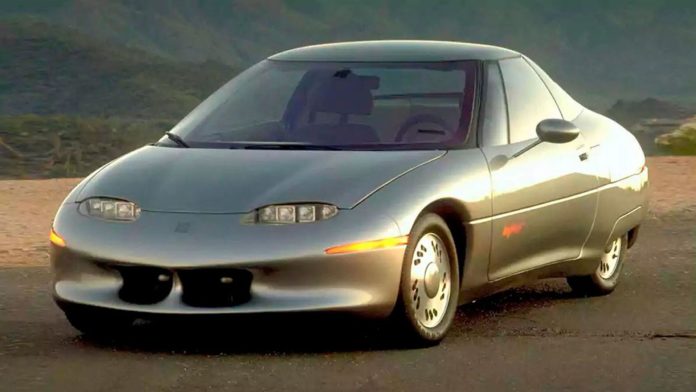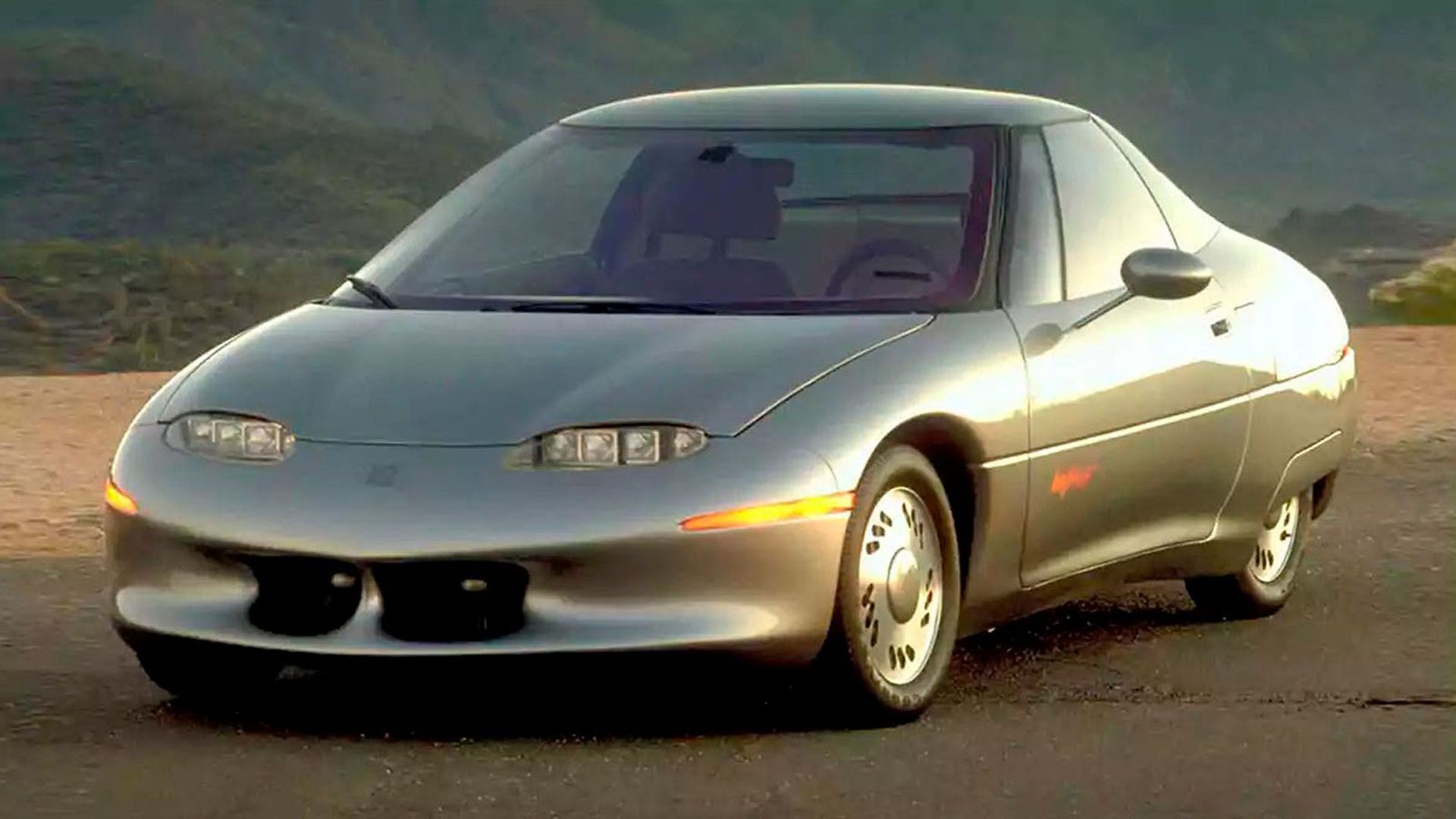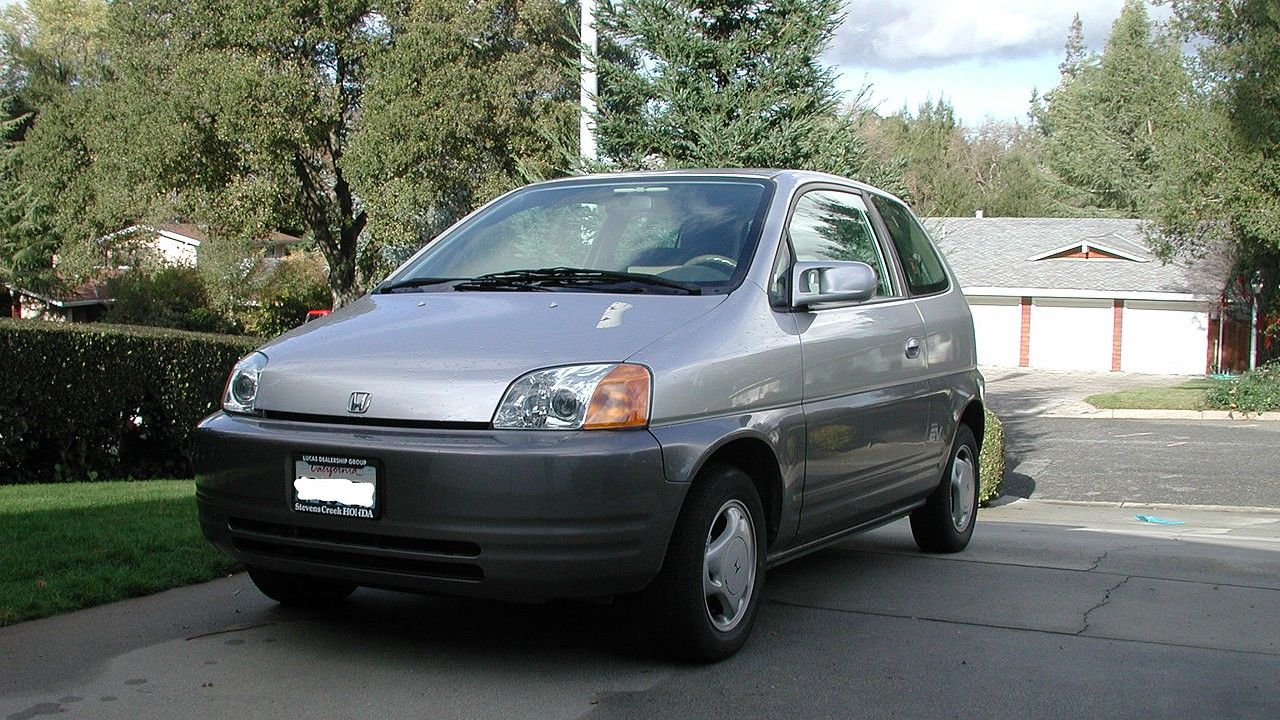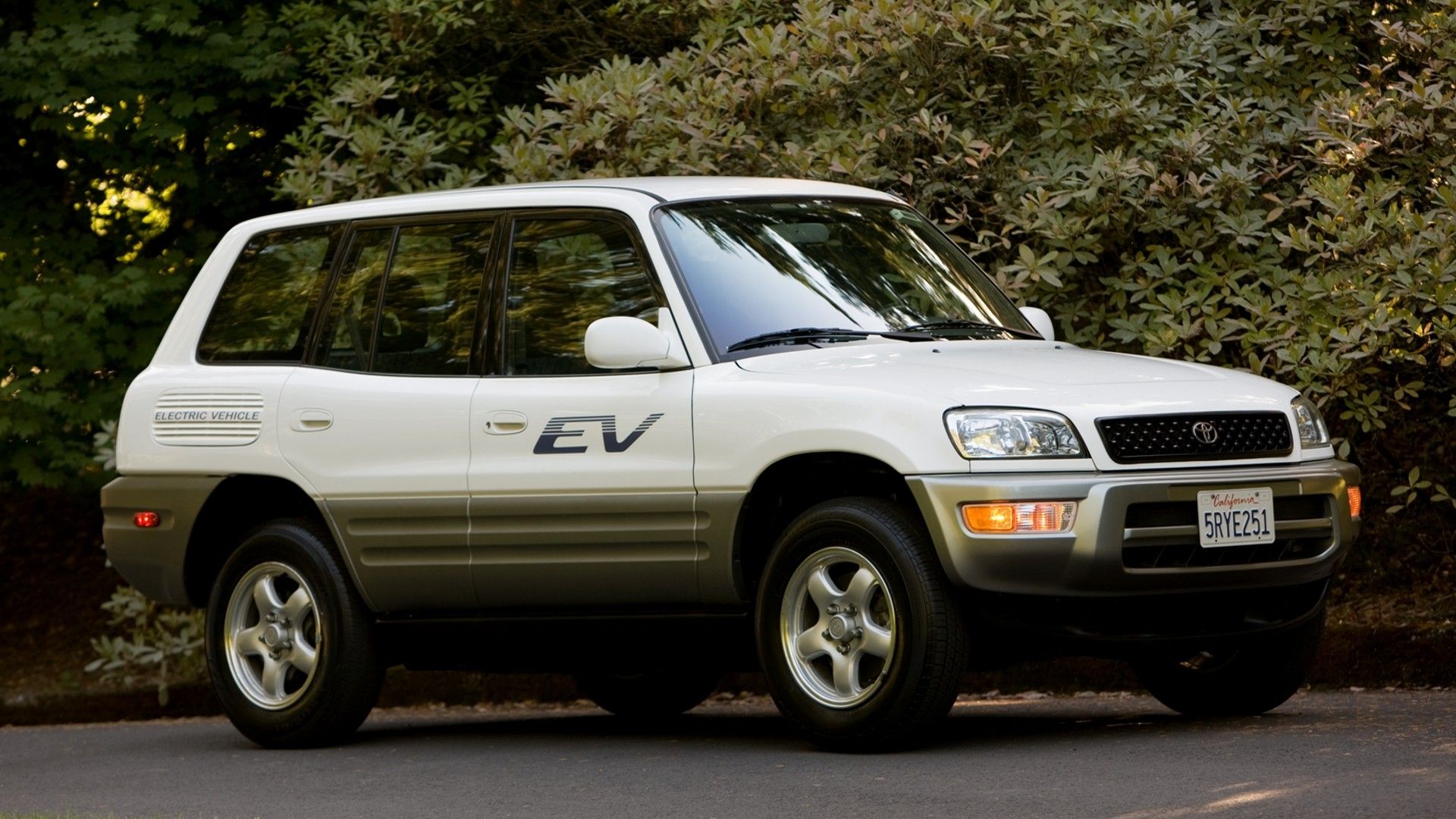Summary
- Electric cars were once more popular than gas-powered cars, but they faced limitations such as limited driving range and lack of charging infrastructure.
- The Baker Electrics Coupe was the first widely available electric car, hitting the market in 1899. It had a driving range of 15 miles and was popularized by notable figures like Thomas Edison.
- The General Motors EV1, produced from 1996 to 1999, is considered an advanced electric car and had a driving range of 100 miles. It featured advanced technology like keyless entry and a futuristic dashboard.
Did you know that electric cars came before internal combustion cars? Most people think EVs are brand new, but electric vehicles were once more popular than gas-powered machines. Before the development of the internal combustion engine, electric batteries made more sense for vehicular travel. Still, once the ICE was developed, electric cars went by the wayside, not to return to the market for nearly a century.
In the late 19th century, electric vehicles comprised nearly one-third of the new car market, but these vehicles faced serious issues compared to ICE models. Early EVs were mired with limited driving range, the lack of a charging network, and very little power. As the world turned toward fossil fuels, EVs were pushed aside and didn’t return until recently.
1 Baker Electrics Coupe – The First Widely Available Electric Car
Electric cars date back to the 1830s, but the first widely available model, with a decent driving range for the time, was the Baker Electrics Coupe. This car hit the market in 1899 and cost $850, which was pretty expensive in those dates. The Baker Electric was produced by the Baker Motor Company, which was based in Cleveland, Ohio.
Baker Electrics Coupe EV Stats
|
Battery Materials |
Nickel-Iron |
|
Horsepower |
1 hp |
|
Top Speed |
10 mph |
|
Driving Range |
15 miles |
This electric car was popularized by being one of the first models displayed in New York at the very first auto show in the country. This car was attractive to many top names, including Thomas Edison, who purchased one as his first car. Edison had a special bond with this car, having designed the nickel-iron batteries to power the electric motor.
2 Studebaker Runabout Electric – An EV From A Big Name
Studebaker was one of the top names in the early automotive industry in America. The Runabout Electric appeared in 1902 with an open-top look featuring quilted seating that looked pretty comfortable. This new electric car gave the masses much more to enjoy than the Baker Electrics Coupe.
Studebaker Runabout Electric EV Stats
|
Battery Materials |
Nickel-Iron |
|
Horsepower |
1.5 hp |
|
Top Speed |
18 mph |
|
Driving Range |
30-40 miles |
Studebaker was instrumental in the electric vehicle market during the first decade of the 1900s, building a closed-top version of the Runabout, a sedan, and even a minibus that fit up to ten passengers. The production numbers only reached 1841 models during the decade, and Studebaker stopped producing EVs in 1912.
3 Detroit Electric – The Tesla Of The Early 20th Century
Detroit Electric produced an impressive electric car from 1907 to 1939, spanning World War I and the Great Depression. This car was considered the most successful electric vehicle of the time, giving drivers what they yearned for from earlier models.
Detroit Electric EV Stats
|
Battery Materials |
Lead-Acid/Optional Nickel-Iron |
|
Horsepower |
10 hp |
|
Top Speed |
20 mph |
|
Driving Range |
80 miles |
During its time in production, 13,000 models of the Detroit Electric were produced. This car held a driving record of 211 miles, which was impressive for the time and still pretty good today. The driving range made these cars competitive against ICE cars of the time. The high cost, which was nine times that of a Ford Model T, meant this car was sold to mostly well-heeled celebrities and wealthy businesspeople of the time.
4 DKW Elektro-Wagen – The First Post-War EV
Heading across the Atlantic to find German engineering at work after World War II presents us with the DKW Elektro-Wagen. This electric vehicle appeared in 1956 and was an electrically powered van from DKW, a subsidiary of Audi. This small electric van was part of the lineup of delivery vehicles offered by this company.
DKW Elektro-Wagen EV Stats
|
Battery Materials |
Lead-Acid |
|
Horsepower |
6.7 hp |
|
Top Speed |
25 mph |
|
Driving Range |
50 miles |
The Elektro-Wagen stayed in production until 1962. DKW made 100 different versions of this van, which was used by public services and power companies. Audi eventually restored one mode to be part of the Audi display museum, providing a piece of history that could have been lost. This was one of the first electric vehicles with batteries located in the floor pan.
5 Henney Kilowatt – An EV Developed In Response To Crisis
Some products, including vehicles, result from a crisis that caused over reliance on specific materials or processes. The Henney Kilowatt was one such product. The Suez Crisis of 1956 showed an overdependence on fossil fuels, and three years later, this little car was built.
Henney Kilowatt EV Stats
|
Battery Materials |
Lead-Acid |
|
Horsepower |
7 hp |
|
Top Speed |
40 mph |
|
Driving Range |
40 miles |
The Henney Kilowatt was one of the first EVs without a gearbox, only offering forward and reverse to switch between directional driving. By 1960, the Kilowatt had a top speed of 60 mph and added 20 miles to its driving range. This car used the Renault Dauphine body, and records show that 100 bodies were delivered to Henney. Unfortunately, only 47 cars were actually sold to customers, and production ended in 1962.
6 Chevrolet Electrovair II – GM Experimented With Everything in the 1960s
The GM leadership during the 1960s took nearly every idea and put it to work. Whether it was a car powered by a jet engine or a model using only electricity, GM was at the forefront of development. The Chevrolet Electrovair II arrived in 1966 using the Corvair sedan as the basis for this electric car.
Chevrolet Electrovair II EV Stats
|
Battery Materials |
Silver-Oxide |
|
Horsepower |
115 hp |
|
Top Speed |
80 mph |
|
Driving Range |
40-80 miles |
The Electrovair nearly went into production, but the expensive silver-oxide batteries weren’t durable enough to make this project worth pursuing by GM. The Corvair was the right choice for electrification because it was the lightest car in the lineup and the engine was located in the rear, offering room for an electric motor and battery pack.
7 AMC Pacer “Change of Pace” – A Truly Unexpected EV
As fuel prices rose in the 1970s, American automakers searched for ways to create more efficient powertrains. By this time, Toyota and Honda brought the U.S. market the Corolla and Civic, which were taking over with their small, efficient engines. The AMC Pacer “Change of Pace” arrived in 1978 as an electric version of the compact Pacer.
AMC Pacer “Change of Pace” EV Stats
|
Battery Materials |
Lead-Acid |
|
Horsepower |
20 hp |
|
Top Speed |
55 mp |
|
Driving Range |
53 miles |
Today, many younger drivers have never heard of AMC, but at the time, this independent automaker teamed with the Electric Vehicle Association to create this electric Pacer. This electric car used mostly standard components, including a three-speed automatic transmission. Only 100 cars were made, and the steep price of $12,360 meant a bit of doom for this car.
8 General Motors EV1 – A Famous Recent Electric Car
If you ask many drivers about the first electric vehicle, they might point you toward the General Motors EV1. This car was made in 1996, and production lasted until 1999, with 1,117 models produced. During its time, the EV1 was considered an advanced car.
General Motors EV1 EV Stats
|
Battery Materials |
Lead-Acid |
|
Horsepower |
137 hp |
|
Top Speed |
80 mph |
|
Driving Range |
100 miles |
The EV1 was light but strong, with an aluminum chassis and composite body panels. The top speed was limited to 80 mph, making many wonder what the car could do if it wasn’t limited. Some owners reported the real-world driving range to be lower than the 100 miles quoted. The GM EV1 was a compact electric car, but it came with some advanced tech, including keyless entry and a futuristic dashboard.
9 Honda EV Plus – After The EV1 Honda Took An Electric Turn
The Honda EV Plus arrived in 1997, and only 340 copies of this small hatchback-styled car were made. Honda didn’t put much emphasis on style; the EV Plus was ugly and simple, but it brought a forward-thinking, environmentally-friendly vision to the market.
Honda EV Plus EV Stats
|
Battery Materials |
Nickel-Metal Hydride |
|
Horsepower |
66 hp |
|
Top Speed |
81 mph |
|
Driving Range |
60-80 miles |
Although the Honda EV Plus was nothing more than a testbed for battery technology, it was one of the first electric cars to offer the impressive quality of instant acceleration. This little Honda could sprint from 0-60 mph in only 4.9 seconds, which made it extremely quick. This Honda is still fast by today’s standards.
10 Toyota RAV4 EV – Toyota Electrified Popularity
Today’s market is filled with electric SUVs, but in 1997, this was a brand-new idea. Toyota chose its compact RAV4 as the electric SUV that would start things. The Toyota RAV4 EV is one of the latest-model EVs to be well ahead of its time. The RAV4 EV was sold in Japan and the United States, with more than 1000 models sold in California.
Toyota RAV4 EV EV Stats
|
Battery Materials |
Nickel-Metal Hydride |
|
Horsepower |
67 hp |
|
Top Speed |
85 mph |
|
Driving Range |
95 miles |
Although Honda introduced the EV Plus the same year, Toyota didn’t catch on to the quick acceleration in today’s electric cars. The RAV4 EV from 1997 took 18 seconds to reach 60 mph. Still, this electric SUV helped bring EVs back into the market and set the tone for some of today’s electric vehicles.






